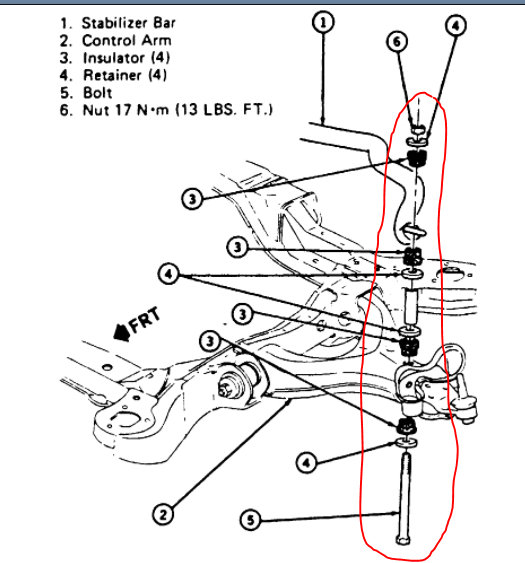Keep looking. Anti-sway bars reduce the body's tendency to lean to one side when cornering at high speeds. Beyond that, they don't do anything. Before the mid to late '70s, a lot of car models didn't even have anti-sway bars.
What you're describing is called "torque steer". It was a characteristic of some older front-wheel-drive models, and was more noticeable on high-powered cars. The biggest contributor to torque steer was unequal length front half shafts. That has either been addressed by using a two-piece right half shaft, or by design changes to the geometric relationship of the steering and suspension parts, by every manufacturer. Today torque steer under moderate acceleration is usually caused by worn or loose parts. Something is allowing the alignment to change between braking and accelerating. Things that can cause that include ball joints, tie rod ends, badly-worn and leaking struts, and control arm bushings. Control arm bushings used to last the life of the vehicle, but for a long time softer rubber compounds have been used to improve ride quality.
A real common cause of torque steer today is caused by the tires. They aren't exactly defective, but they develop unequal rolling resistance. In most cases the car will go straight when cruising at a steady speed. The biggest clue, when you have a front-wheel-drive car, is it will pull in one direction when accelerating, and the other way under normal-to-hard braking. To identify that, switch the front wheels / tires side to side. Now it will pull the other way when accelerating. It also isn't unheard of for the car to go straight after switching the tires. If it does pull the other way, switch the two wheels / tires on one side, front to rear. If the pull is still there, switch them on the other side, front to rear. If the pull is gone, leave them where they are until two wear out, then replace just those two.
There's another problem to be aware of that only applies to GM cars. To work on the engine or transmission, the entire assembly has to be lowered on the engine cradle, or cross member. On Fords those are welded on, so different service procedures apply. Chrysler products also have easier service procedures, but if the cross member is lowered, special bolts force it to go back to its proper orientation when it is reinstalled. There's no such provision on GM cars. The cross member can be reinstalled off-center; in fact, it almost certainly will be unless it is marked first. Being off-center moves the lower control arms that are attached to it, and that causes both front wheels to lean to one side. That's called "camber", and is the first of the three main alignment angles to be adjusted. If the alignment specialist isn't informed about the recent service involving the cross member, he will readjust camber on both wheels to bring them back into specs, but that still leaves the struts tipped in on top at different angles. (That's called "steering axis inclination, SAI). All alignment computers measure that automatically, but we rarely look at it unless we know we're looking for a problem. On all other cars this is one measurement that points to a quality rebuild job to a crashed vehicle.
SAI is rather easy to adjust. No specs are given for it. All that's important is it must be very nearly equal on both sides. A typical value is 28 degrees, plus or minus 0.2 degrees.
The important thing to know about unequal SAI is it causes a serious loss of "predictability". That refers to knowing what to expect the car to do. With a tiny bump in the road, the car might dart one way unexpectedly, and the next time on the same bump, it might go the other way. Unequal SAI makes for a very tiring car to drive, and you can't take your eyes off the road for an instant. You definitely won't want to drive it on the highway.
If the seller tells you work was done involving removing the cross member, especially if this was an inexperienced, but competent do-it-yourselfer, the handling problem could be an easy fix at the alignment shop. They may be selling the car because they gave up trying to solve it. Any tire and alignment shop is also a good place to go for an inspection of the steering and suspension systems. Most don't charge for it if you have them do the repairs. When it isn't your car yet, consider having them do a thorough safety inspection. That takes about an hour and can stop you from buying a car with problems no one told you about, or it can put your mind at ease that it won't need a lot of repairs soon. These inspections will include the brake system too. It is pretty much the same inspection all trade-in cars get at a dealership. This article explains better what is involved:
https://www.2carpros.com/articles/basic-car-safety-inspection
Here's another dandy article. It is about noises, but many of the things involved can also cause the symptoms you described:
https://www.2carpros.com/articles/popping-noise
Thursday, January 28th, 2021 AT 3:08 PM



